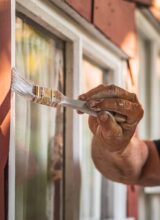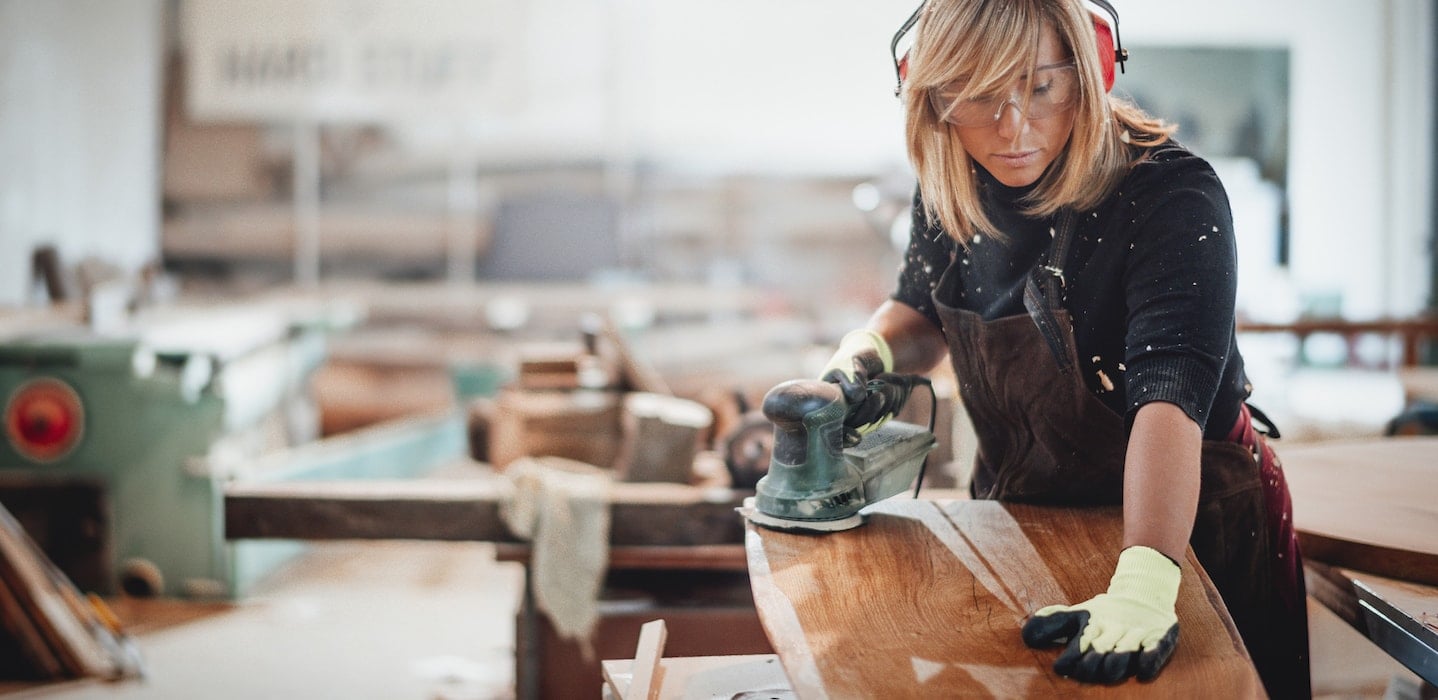Are you new to the painting business? If so, you’ve likely realized that estimating a paint job is a tricky balance. On one hand, you don’t want to undersell your services and cut out all of the profit. On the other, you can’t set a painting bid so high that you price yourself out of a gig.
Finding that bidding sweet spot between too little and too much takes some time and preparation. But with practice, and by keeping the following advice in mind, your painting bids will be just right.
So, are you ready to learn how to bid painting jobs (and then master the art of the bid)? Get your abacus and calculator ready, and let’s start crunching the numbers.
Factors to consider when bidding on a painting job
Most painting bids are based on 3 primary factors:
Total hours of preparation work
Total hours for painting
Total material cost
In addition to this, there may be some variables added to the equation such as difficulty of job, specialty materials, or time constraints. That said, before you can set an accurate estimation, you first need to see the site.
Conduct a site inspection
Never give a painting bid without seeing the place where the job will take place. There could be factors that drive up the price or add difficulty to the job. Do you know the square feet? Will you need more than one painting contractor for the job? Perhaps you may need more paint. Or you might need multiple colors for wall accenting. You won’t know until you perform a walkthrough and inspect each section of the painting project.
Similarly, don’t just take the client’s word for it when it comes to square footage details. Measure the space yourself so you have an accurate idea of what materials and labor will be needed, and how long the job will likely take. Running out of materials leads to delays, trips to the store, and other out-of-pocket expenses that quickly add up.
To find the surface area of the exterior or interior walls, multiply the height of each wall by its width. And to make it easier on yourself, break down estimates into individual rooms. Appraise each room separately and then add them together to find the total price.
Discuss paint types & preferences with the client
After inspecting and measuring the walls that need to be painted, ask the clients relevant questions such as:
• Do you want a specific type of paint?
• Will colors need to be custom mixed?
• Will you be providing the paint?
• Is it just the walls being painted, or do the doors, trim, ceiling need to be done as well?
All of these will impact the expected costs of paints, which will be one of the largest expenses for a job.
In most cases, it takes approximately a gallon of paint to cover 400 square feet. For example, a 1500 ft2 home would likely require 4 gallons of body color (and a gallon of trim color, but let’s keep the math simple). A gallon of paint will typically range from $15-$80, but for simplicity sake, let’s set the price at $20. So, the 4 gallons of paint would cost you $80 total.
That would mean:
• 2,500 ft2 – 7 gallons of paint at $140
• 3,000 ft2 – 8 gallons of paint at $160
• 4,000 ft2 – 10 gallons of paint at $200
Note: This all depends on the type and quality of the paint. Additionally, if you have a working relationship with a paint store, you may be able to talk them down on paint prices, especially if you’re a regular customer that’s buying in bulk.
Determine your costs: materials & labor
The amount of materials you need will depend on factors such as the number of windows, how much prep-work is needed, how much roof line there is, etc. The more prepwork that’s required and the greater the difficulty of the job, the more material costs there will be.
Common materials you’ll need to factor into a job bid include:
• Paint rollers
• Masking plastic
• Masking paper
• Tape
• Caulking
• Primer
(And, of course, the paint itself.)
An experienced crew of 2-3 painters can typically finish a 2,500 square feet in two full business days. At a rate of $20/hour that would cost approximately $1080 for 54 hours of total labor.
That said, pricing in labor can add complexity to any bid because there are so many factors that can impact how much labor will be required from a professional painter such as:
• Vegetation coverage (for outside jobs)
• Type of windows
• Applying a very different covers since multiple coats will be needed to be applied to cover it
• House access
• Prep work
• Wood damage, peeling, or bad caulking
Just to be safe, err on the side of overestimating the cost of labor. It’s better to set a client’s expectations higher and then surprise them with a lower price than vice versa.
Important cost consideration: insurance
Every painting job involves inherent risks to your business and its employees, especially whenever you’re in someone else’s home. For any gig, you need general liability insurance to protect your painting business from the risk of an accident to a third party such as property damage or bodily injury. For a small upfront investment, a general liability policy can help cover the costs of:
• Bodily injury
• Property damage
• Personal injury
• Advertising injury
With Thimble, you can get an affordable, on-demand painters insurance policy that goes by the hour, day, or month. So, calculate the total time you’ll need a policy and factor that into your pricing estimate.
Adding it all together & presenting your bid
Apply your markup
Now that you have a better picture of what the job will cost you from materials, labor, and insurance, you need to apply your percentage markup to ensure that the job is worth your while. Although it depends on your experience, overhead, and the size of your crew, most painters will add a markup that ranges from 30% on the low end and 50% on the high end.
Don’t sell yourself short. Factor in other costs like marketing, travel, and accounting. Ideally, you should walk away from every job with at least 20% in profit, otherwise you might be wasting your time.
Add it all up
After you’ve determined the cost of paint, materials, labor, insurance, and markup, you’ll have your total painting project cost.
Present your bid
It all starts with your bid. Be sure not to rush the process and risk having your estimate be wildly off. By being thorough and sticking to these steps, you’ll be able to accurately bid out any paint job at a price that suits both your business and the client’s budget.











